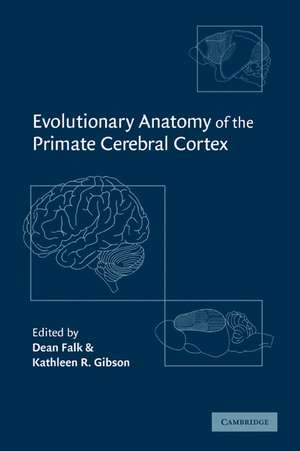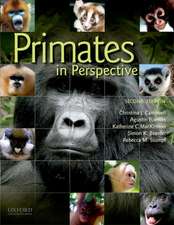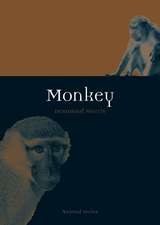Evolutionary Anatomy of the Primate Cerebral Cortex
Editat de Dean Falk, Kathleen R. Gibsonen Limba Engleză Paperback – 12 noi 2008
| Toate formatele și edițiile | Preț | Express |
|---|---|---|
| Paperback (1) | 440.69 lei 43-57 zile | |
| Cambridge University Press – 12 noi 2008 | 440.69 lei 43-57 zile | |
| Hardback (1) | 892.53 lei 43-57 zile | |
| Cambridge University Press – 18 apr 2001 | 892.53 lei 43-57 zile |
Preț: 440.69 lei
Nou
Puncte Express: 661
Preț estimativ în valută:
84.33€ • 88.27$ • 70.19£
84.33€ • 88.27$ • 70.19£
Carte tipărită la comandă
Livrare economică 31 martie-14 aprilie
Preluare comenzi: 021 569.72.76
Specificații
ISBN-13: 9780521089951
ISBN-10: 0521089956
Pagini: 364
Ilustrații: 70 b/w illus. 9 tables
Dimensiuni: 156 x 234 x 20 mm
Greutate: 0.51 kg
Ediția:1
Editura: Cambridge University Press
Colecția Cambridge University Press
Locul publicării:Cambridge, United Kingdom
ISBN-10: 0521089956
Pagini: 364
Ilustrații: 70 b/w illus. 9 tables
Dimensiuni: 156 x 234 x 20 mm
Greutate: 0.51 kg
Ediția:1
Editura: Cambridge University Press
Colecția Cambridge University Press
Locul publicării:Cambridge, United Kingdom
Cuprins
Preface; Prologue Stephen J. Gould; Introduction to Part I Kathleen Gibson; Part I. The Evolution of Brain Size: 1. Encephalization and its developmental structure: how many ways can a brain get big? Peter M. Kaskan and Barbara L. Finlay; 2. Neocortical expansion and elaboration during primate evolution: a view from neuroembryology Pasko Rakic and David R. Kornack; 3. In defense of the expensive tissue hypothesis Leslie C. Aiello, Nicola Bates and Tracey Joffe; 4. Bigger is better: primate brain size in relationship to cognition Kathleen Gibson, Duane Rumbaugh and Michael Beran; 5. The evolution of sex differences in primate brains Dean Falk; 6. Brain evolution in hominids: are we at the end of the road? Michel A. Hofman; Introduction to Part II Dean Falk; Part II. Neurological Substrates of Species-Specific Adaptations: 7. The discovery of cerebral diversity: an unwelcome scientific revolution Todd M. Preuss; 8. Pheromonal communication and socialization Brunetto Chiarelli; 9. Revisiting australopithecine visual striate cortex: newer data from chimpanzee and human brains suggest it could have been reduced during australopithecine times Ralph L. Holloway, Douglas C. Broadfield and Michael S. Yuan; 10. Structural symmetries and asymmetries in human and chimpanzee brains Emmanuel Gilissen; 11. Language areas of the hominid brain: a dynamic communicative shift on the upper east side planum Patrick J. Gannon, Nancy M. Kheck and Patrick R. Hof; 12. The promise and the peril in hominid brain evolution Phillip V. Tobias; 13. Advances in the study of hominid brain evolution: magnetic resonance imaging (MRI) and 3-D reconstruction Katerina Semendeferi; 14. Exo- and endocranial morphometrics in mid-Pleistocene and modern humans Katrin Schafer, Horst Seidler, Fred L. Bookstein, Hermann Prossinger, Dean Falk and Glenn Conroy; Epilogue: the study of primate brain evolution: where do we go from here? Harry Jerison.
Recenzii
"...a good deal of the book's contents will be familiar to the expert reader...an excellent choice for anyone who needs a survey of current evolutionary brain research." Current Anthropolgy
Descriere
Review of brain evolution in primates including humans.












